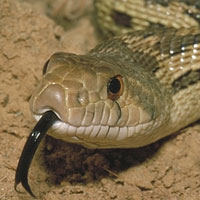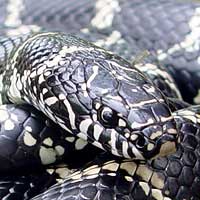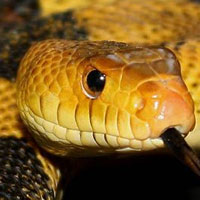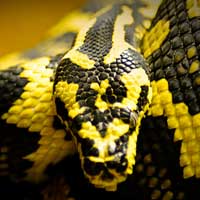The Eastern Brown Snake: An In-Depth Guide to This Venomous Species
The Eastern Brown Snake (Pseudonaja textilis) belongs to the Elapidae snake family, which is known for its highly venomous species with fixed front fangs and potent neurotoxic venom, making it one of the most dangerous snakes native to Australia and parts of Papua New Guinea.
Scientific Name: Pseudonaja textilis
Snake Family: Elapidae
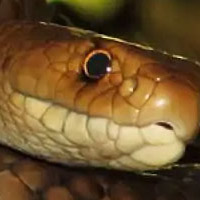
What You Should Know About the Eastern Brown Snake
The Eastern Brown Snake (Pseudonaja textilis) is one of the most venomous snakes in the world, native to Australia and parts of Papua New Guinea. Known for its speed, potent venom, and adaptability, this snake plays a critical role in its ecosystem by controlling rodent populations. Despite its fearsome reputation, it only strikes in self-defense when threatened, making education about its behavior vital for coexistence.
Where Does the Eastern Brown Snake Live?
The Eastern Brown Snake is highly adaptable and occupies a wide range of habitats. Key habitat characteristics include:
- Geographic Range: Found throughout eastern and southern Australia and parts of Papua New Guinea.
- Preferred Environments: Grasslands, savannas, forests, and urban areas.
- Climate: Thrives in warm to hot climates, often in arid and semi-arid regions.
This snake’s ability to adapt to both rural and urban environments has allowed it to flourish across its range. Below is a summary of its habitat preferences:
| Habitat Feature | Description |
|---|---|
| Geographic Range | Eastern and southern Australia, Papua New Guinea |
| Preferred Terrain | Grasslands, forests, and urban areas |
| Climate | Warm to hot |
What Does the Eastern Brown Snake Eat?
The Eastern Brown Snake is a carnivorous predator with a diet that focuses on small mammals and reptiles. Key dietary details include:
- Primary Prey: Rodents such as mice and rats, making it essential for pest control.
- Occasional Prey: Birds, frogs, and lizards.
- Hunting Strategy: An active hunter that relies on its speed and venom to subdue prey quickly.
This snake’s feeding habits are vital for maintaining ecological balance, especially in agricultural regions where rodents are prevalent.
Understanding the Behavior of the Eastern Brown Snake
The Eastern Brown Snake is often misunderstood due to its defensive nature. Key behavioral traits include:
- Activity Patterns: Diurnal, most active during the day.
- Social Structure: Solitary, except during mating season.
- Defensive Displays: Raises its body off the ground, flattens its neck, and hisses when threatened.
Despite its reputation, this snake avoids confrontation and strikes only as a last resort. Understanding its behavior is crucial for reducing the risk of encounters.
Health and Lifespan of the Eastern Brown Snake
The Eastern Brown Snake is a resilient species with a relatively long lifespan. Key health aspects include:
- Lifespan: 10-15 years in the wild, up to 20 years in captivity.
- Health Concerns: Susceptible to habitat destruction and predation by larger animals such as birds of prey.
- Adaptations: Its speed and camouflage help it avoid predators and capture prey efficiently.
Providing a suitable environment in captivity significantly enhances its health and longevity.
How Does the Eastern Brown Snake Reproduce?
The Eastern Brown Snake reproduces through oviparous means, laying eggs that hatch after an incubation period. Key reproductive details include:
- Mating Season: Spring, when males engage in combat for the right to mate.
- Egg Clutch Size: Typically 10-35 eggs per clutch.
- Incubation Period: Eggs hatch after 60-80 days.
- Hatchling Behavior: Young snakes are independent and venomous from birth.
This reproductive strategy ensures the continuation of the species in its diverse habitats.
Safety Guidelines for Handling the Eastern Brown Snake
Handling the Eastern Brown Snake is a task for experienced professionals. Essential safety tips include:
- Use proper tools like snake hooks and secure enclosures.
- Wear protective gloves and boots to minimize bite risk.
- Ensure enclosures are escape-proof and mimic natural habitats.
- Keep antivenom readily available and follow local emergency protocols.
Only trained individuals should handle this species to ensure both human safety and the snake’s well-being.
Disclaimer
The information provided in this article is for educational purposes only. SnakeEstate strongly advises against handling or interacting with venomous snakes, such as the Eastern Brown Snake, unless you are a trained and licensed professional. These snakes pose significant risks, and improper handling can result in serious injury or death. Always adhere to local regulations and prioritize safety when dealing with wildlife.
Other Snakes In This Species
 Asp Viper
Asp Viper Black Mamba
Black Mamba Boomslang
Boomslang Brazilian Coral Snake
Brazilian Coral Snake Bushmaster
Bushmaster Coastal Taipan
Coastal Taipan Common Death Adder
Common Death Adder Common European Adder
Common European Adder Copperhead
Copperhead Coral Snake
Coral Snake Cottonmouth
Cottonmouth Eastern Brown Snake
Eastern Brown Snake Eastern Diamondback Rattlesnake
Eastern Diamondback Rattlesnake Egyptian Cobra
Egyptian Cobra Fer-de-lance
Fer-de-lance Forest Cobra
Forest Cobra Indian Cobra
Indian Cobra Inland Taipan
Inland Taipan Jameson’s Mamba
Jameson’s Mamba King Cobra
King Cobra Lancehead
Lancehead Lataste’s Viper
Lataste’s Viper Malayan Krait
Malayan Krait Mojave Rattlesnake
Mojave Rattlesnake New Guinea Small-eyed Snake
New Guinea Small-eyed Snake Nose-horned Viper
Nose-horned Viper Puff Adder
Puff Adder Russell’s Viper
Russell’s Viper Saw-scaled Viper
Saw-scaled Viper Solomon Island Coral Snake
Solomon Island Coral Snake South American Rattlesnake
South American Rattlesnake Tiger Snake
Tiger Snake Western Diamondback Rattlesnake
Western Diamondback Rattlesnake



